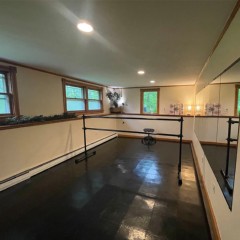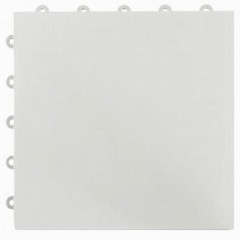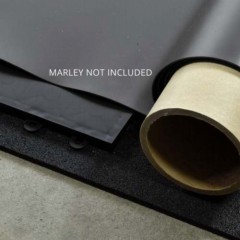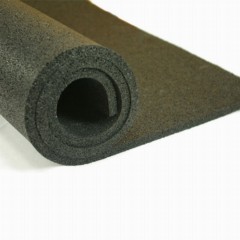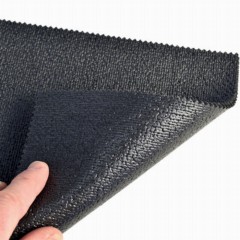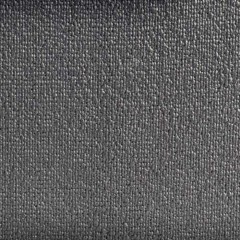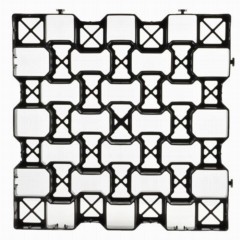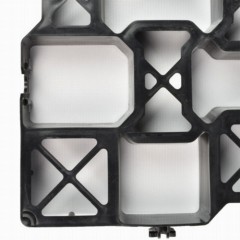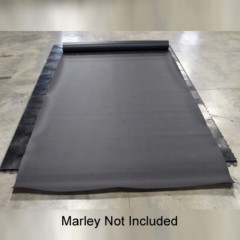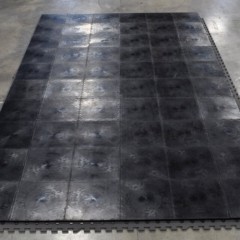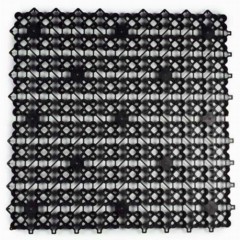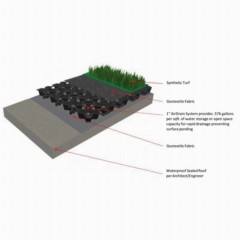Options for Plastic Floor Underlayment
When installing a new floor, you sometimes can go directly over the existing subfloor. Other times, you may need a plastic floor underlayment to create an extra layer between the floor and subfloor.
Plastic subfloor panels offer stability and drainage options. You can use them as a tile floor underlayment inside or as an underlayment for outdoor tile to efficiently drain rain away, among many other use cases. Plastic underlayment works for dance studios, erosion control along outdoor paths, and everywhere in between.
Trust the Greatmats customer service team when you need to buy the perfect indoor or outdoor underlayment. Plastic might not always seem like first-rate flooring, but it is unmatched as an underlayment.
Types of Plastic Underlayment
Most customers using our plastic underlayment products use them indoors for dance studios and performances or outdoors to manage erosion.
Dance-Related Plastic Subfloor Underlayment
Some of our most popular dance-related plastic floor underlayment products include:
- Court Floor Tile Flat Top: These 1x1-foot tiles work as a dance subfloor over low-pile carpet or concrete. You can place your own roll of marley over the top with or without adding a cushioning layer underneath. Our customer, Chen from Portland, Ore., used our plastic tiles to create a dance floor over carpeting his daughter could use for practice inside the home.
- Home Dance Subfloor: This kit includes soft foam mats for cushioning and black plastic athletic underlay tiles as a firm subfloor for a stable, thick floor. You can then add your own roll of marley over the top of the kit. The St. Paul, Minn., Ballet uses this kit for its traveling performances across Minnesota and Wisconsin, helping it create a safe floor wherever it performs. Another customer, Josie of Florida, created a home studio in the garage, providing a safe place for dance training outside the professional studio.
- Dance Studio Subfloor Elite: This kit is ideal for commercial dance studios, consisting of a roll of rubber for cushioning and a plastic tile layer. You can then add your own roll of marley over the top. The historic Mabel Tainter Theater in Menomonie, Wis., installed this kit to create the perfect floor for a traveling ballet performance at the theater. Northwoods Dance in Pequot Lakes, Minn., installed this kit when it moved to a new dance studio, providing versatility for teaching multiple dance styles.
- Elastic Underlayment: Our roll of thin underlayment delivers excellent cushioning for use on a hard floor at a dance studio or performance stage. Your own roll of marley can go directly over the top.
Outdoor-Related Plastic Tile Underlayment
When you need to prevent erosion around your property, we offer a couple of plastic tile underlayment products that create a sturdy surface.
GeoGrid Cellular Paving System: The open-grid plastic underlay tiles protect areas with erosion and standing water problems. They hold the dirt together underneath gravel and grass, and work well for:
- Flood-prone areas
- Parking lots
- Walking paths
- Outdoor event areas
- Horse paddocks
- Access routes
- Emergency vehicle routes
Roof Open Drainage Tile: You’ll primarily use this perforated plastic underlay tile under synthetic turf. It works well for:
- Artificial grass in landscaping
- Artificial grass for sports fields
- Dog daycare turf floors
- Putting green drainage
- Playground turf drainage
Features and Benefits of Plastic Floor Underlayment
Some of the key benefits of using our plastic floor underlay include:
- Affordable dance studio subfloor
- Sturdy subfloor for teaching dance moves
- Tiles are easy to install
- Versatile to use with many dance styles
- Some models don’t require adhesive
- Supports thin vinyl marley rolls
- Temporary and portable uses are common
- Outdoor plastic works under gravel or grass
- Secures the ground to resist erosion
- Outdoor tiles withstand significant weight
Use Types for Plastic Underlayment
Our customers use our plastic underlayment flooring tiles in a variety of indoor and outdoor situations, including:
- Commercial dance studios
- Home dance studios
- Theaters and stages
- Performance locations for traveling dance troupes
- Flood-prone outdoor areas
- Outdoor pathways
- Outdoor event areas
- Parking areas
- Near erosion-threatened sidewalks and driveways
- Under artificial grass layouts
Plastic Floor Underlayment Q&A
What are the best underlayment options for dance floors over concrete?
The
best underlayment options for dance floors over concrete are those that have padding that protects the lower body joints of the dancers. However, it also needs to be firm enough to support all types of dance moves. High-density foam paired with hard plastic tiles in a kit is a popular choice for this purpose.
What are the best portable plastic subfloor options for home and traveling dance floors?
The
best portable plastic subfloors for home and traveling dance floors are those that prepare you for any flooring surface you might encounter. If you find carpeting at the performance site, plastic tile subflooring is easy to install to generate a firm base. For going over concrete or hard tile, you might need to add a firm foam layer under the plastic subfloor. At Greatmats, we sell traveling dance floor kits with foam and plastic layers.
What are the benefits of plastic underlayment for dance studios?
The
benefit of using plastic underlayment for dance studio flooring is receiving a firm layer over a cushion layer that gives the dancers the stability and fatigue relief they need. Plastic underlayment layers should consist of interlocking tiles that allow for a DIY installation.
Where do you use plastic drainage cell tiles?
You should
use plastic drainage cell tiles as a subfloor underlayment where you need faster drainage. You can deploy this perforated plastic underlay for pavers along rooftops, in garages, near landscaping plants and turf, near driveways and sidewalks, and underneath patios. Some models work in indoor locations, while others are suitable for outdoor locations.
Are plastic grass pavers permeable?
The open-grid, cellular
design of plastic grass pavers is permeable. The openings in the exterior cellular grid tiles allow water to pass through, and the plastic portions of the grid hold the ground in place, preventing erosion. The plastic material that makes up the cellular paving system is not permeable, but the open-grid design is.




